Basically we buy an orchid already with blossoming flowers. A variety of colors of inflorescences attract fans of the aristocratic beauty. Peduncles after the purchase decorate the house for 2-3 months. Then they fade, and the next flowers appear soon. If properly looked after, then the orchid will soon please re-bloom, the main thing is to protect it from diseases and pests. A sick flower will not be able to form buds, it will languish, the probability of its death is high.
Content
Orchid bloom problems
Before you try to stimulate flowering, you need to understand the reasons for its absence. There may be several reasons, this is adaptation to a change of scenery, lack of phosphorus, excess nitrogen, a natural break in flowering or a fungal disease.
Orchid does not bloom
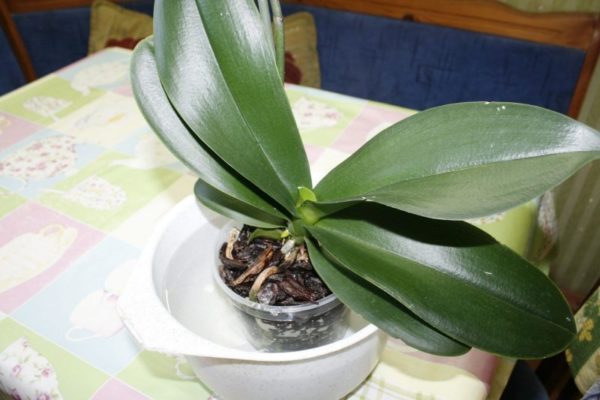 Hybrids begin to bloom after 2 years. The formation of a flower arrow begins after the appearance of 6-8 leaves. The number of buds on one branch is 6 - 35 pieces. Sometimes an orchid fires an arrow in its first year of life, then it does not have the strength to preserve flower stalks, and it discards them. You can understand the symptoms by examining the plant, then fix the problem and find a solution. If this is a disease, then start treatment, if there is a lack of nutrition, then do fertilizing, if root rot, then the plant is better to remove.
Hybrids begin to bloom after 2 years. The formation of a flower arrow begins after the appearance of 6-8 leaves. The number of buds on one branch is 6 - 35 pieces. Sometimes an orchid fires an arrow in its first year of life, then it does not have the strength to preserve flower stalks, and it discards them. You can understand the symptoms by examining the plant, then fix the problem and find a solution. If this is a disease, then start treatment, if there is a lack of nutrition, then do fertilizing, if root rot, then the plant is better to remove.
|
Cause |
Signs |
|
Adapting to new surroundings |
Unopened buds fall within a few days after purchase, flowering stops after 2-4 weeks. New kidneys do not open |
|
The manufacturer introduced a large number of flowering stimulants |
After abundant flowering, phalaenopsis forms 1-2 flower buds, stops flowering and stops growing |
|
Flowering break |
Any flower needs a rest after flowering, the orchid blooms sparingly, or does not bloom, during this period there is an increase in rhizome and leaves |
|
A lot of nitrogen |
Many leaves appear, they are fleshy bright green, begin to crack. No flowers |
|
Phosphorus deficiency |
Small leaves grow, red veins appear on old leaves. New buds do not open, fall off |
|
Disease |
The roots turn black, the plant fades, signs of mold, spots, and deposits appear on it. Foliage turns yellow |
Improper care:
- dry air
- lack of light;
- disturbed at rest;
- drafts;
- low air temperature;
- wrong substrate;
- high humidity.
Orchid buds fade
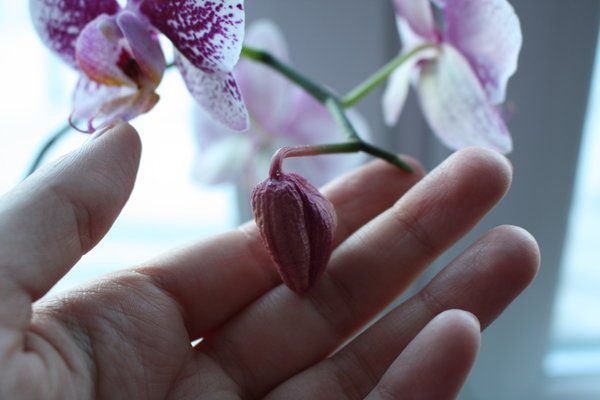 The phenomenon when buds fade is not rare. Orchid is very sensitive to changes in environment, temperature changes, drought and lack of light. The room temperature should be 21-25 * C. During rest, not lower than 13 * C. Humidity level 70-80%.
The phenomenon when buds fade is not rare. Orchid is very sensitive to changes in environment, temperature changes, drought and lack of light. The room temperature should be 21-25 * C. During rest, not lower than 13 * C. Humidity level 70-80%.
Reasons for wilting buds:
|
Problem |
What to do |
|
Plant aging |
When purchasing a beauty in a store, you should ask how old the flower is. In the wild, he lives for decades.Unfortunately, at home, the orchid does not live up to 8 years, it all depends on the environment and care |
| Overheating or high room temperature |
In the summer, on the windowsill, the sun's rays can cause burns to the orchid. On the southeastern and western windows you need to shade the windows. During the heat, the plant releases a lot of moisture, loss of water leads to drying out of the buds |
|
Hypothermia |
The road from the store to the house in winter can cause hypothermia of the flower. Drafts in the apartment are also fatal for peduncles. When transporting flowers, you need to pack well, and try to keep away from drafts in the room, but it is necessary to ventilate the apartment. If on the street +14, then the wet rhizome of the plant can respond to cold |
|
Watering |
When buds appear, the soil can not be overdried. Too frequent watering will cause root decay. |
|
Moving flower |
A trip from the store, moving around the apartment can cause stress in the flower. The new environment may not be suitable for the plant, it is better to transfer it to another place after flowering |
|
Spraying |
The orchid does not like the spraying procedure. Moisture can trigger stains on flowers and buds. |
|
Low humidity |
In winter, air from batteries reduces humidity, temperature changes occur. Contact with cold glass may cause frostbite. You can’t put a pot over the radiator, you need to moisten the air, place a container of water next to it, place the pot on a tray with pebbles, gradually adding water |
|
Not enough light |
Daylight hours should last 11-13 hours. In winter, you need additional lighting. It is worth moving the container to the southern windows |
|
Neighboring Plants, Fruits |
Fruits secrete ethylene, it accelerates the ripening and falling of buds. A deciduous flower bouquet can provoke the fall of peduncles. Orchid does not like strongly smelling flowers either. Indoor plants are sometimes teeming with different insects, such a neighborhood will destroy not only the flowers, but also the orchid itself. With a cotton swab, all insects are carefully collected, treated with insecticides |
|
Pollination |
In summer, when the orchid is taken out onto a loggia, a terrace where wasps, bees fly, pollination is possible. The flowers will dry, a seed box will appear |
|
Pests |
Mealybug sucks the juices from the flowers, which leads to their drying. After examining the plant, you need to get rid of the parasite |
The soil mixture from the garden is not suitable for growing phalaenopsis. The soil contains excess moisture, a large amount of minerals. The mixture should include only peat, pine bark, coconut fiber, a little sand and agroperlite.
Dark spots on the flowers
Black spots on orchid leaves may appear as a result of sunburn. Orchids are best placed in places of diffused light. Also, dark spots on orchid leaves may indicate late blight. The fungus is dangerous for the flower, it can die. First, the spots have a purple hue, then they darken. The reason is frequent watering.Chlorosis can also cause blackened leaves. When the leaves are darkened, they curl. The fungus is also actively developing inside the flower tissues.
Black-brown lesions, convex, pattern in the form of rings, stripes, mosaics - symptoms of viral diseases. The spots may be yellow, then the leaves turn black on the orchid, the leaf plate is destroyed.
There is only one way out - to destroy the plant, the virus is not treated, but there is a high probability of mass infection, the infection is easily transferred to neighboring flowers. Aphids carry viruses, so insect control is a must.
Yellow spots appear along with black dots.They appear when the sun's rays are directed at the leaves. To get rid of the problem, you should rearrange the flower in a safe place.
Bacterial Orchid Disease
When buying a plant in a store, you need examine the entire flower carefully. If spots, mold, light or dark circles, deformation are found, then this instance is best left on the counter.
Brown bacterial rot
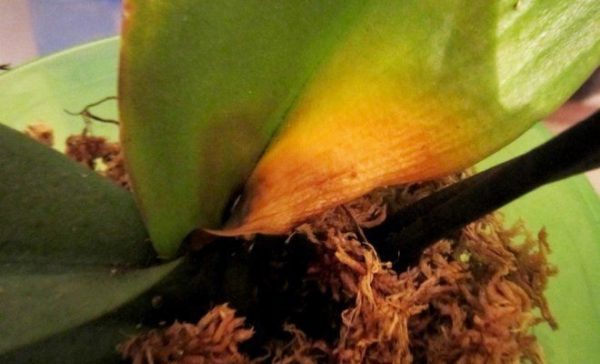 Brown spots appear in a room with high humidity and low temperature. The fungus gradually covers all parts of the plant. Bacterial rot covers the leaf plate. The spots become watery, gradually they darken, grow, connect with each other. More often, the infection settles on young leaves.
Brown spots appear in a room with high humidity and low temperature. The fungus gradually covers all parts of the plant. Bacterial rot covers the leaf plate. The spots become watery, gradually they darken, grow, connect with each other. More often, the infection settles on young leaves.
If small areas are damaged, then the flower can be helped. For this, infected areas are cut with a clean knife to a healthy tissue. The cut is sprinkled with charcoal. With a large-scale infection, treatment will not help, the plant needs to be removed, and the ground changed.
Root rot
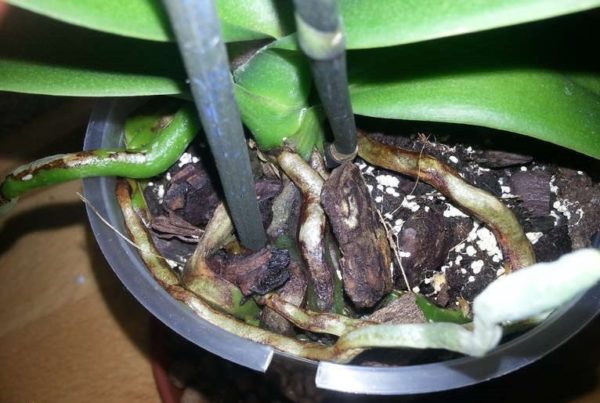 Elevated temperature and high humidity contribute to the appearance of the fungus. The leaves are covered with brown spots, the rhizome becomes soft, at the base, the white roots of the orchid begin to blacken.
Elevated temperature and high humidity contribute to the appearance of the fungus. The leaves are covered with brown spots, the rhizome becomes soft, at the base, the white roots of the orchid begin to blacken.
The roots and soil are treated with 0.2% Fundazole solution or 0.2% Topsin. Treatment is carried out every 2 weeks 3 times. You can immerse the container with the flower in the preparation for several minutes. For prophylaxis, the substrate is disinfected before planting the flower.
Gray rot
A gray fluffy coating on the foliage indicates infection of the flower with gray rot. Spots appear on the orchid flowers in the form of brown dots. The reason may be increased nitrogen, low temperature, a lot of moisture.
Affected areas are removed, plants are sprayed with fungicidal preparations. Substrate and capacity are subject to processing.
Black rot on an orchid
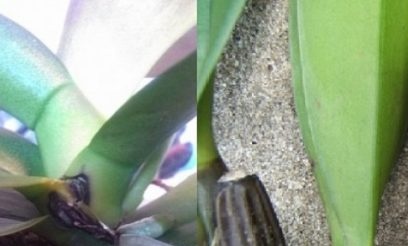 Heat-loving flowers can get black rot. Orchid leaves turn black due to hypothermia. A fungal infection covers the lower part of the plant, including the roots. Black spots on the leaves appear on the orchid, more often plants with weakened immunity suffer. Vitality may be reduced due to other diseases or harmful insects.
Heat-loving flowers can get black rot. Orchid leaves turn black due to hypothermia. A fungal infection covers the lower part of the plant, including the roots. Black spots on the leaves appear on the orchid, more often plants with weakened immunity suffer. Vitality may be reduced due to other diseases or harmful insects.
An orchid urgently needs to be transplanted into another container with a clean mixture. Before planting, all sore spots are cut with a knife, black roots are removed, treated with Bordeaux fluid. The flower needs careful care. If rot has covered most of the plant, then it is destroyed. There is a high probability of infection of neighboring orchids.
Fusarium rot
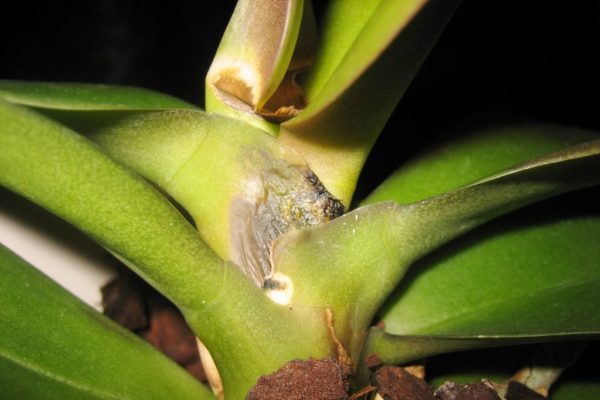 When the room is not ventilated, high humidity causes fusarium. Leaves turn yellow, become soft, curl over time, mold appears on the roots and pink plaque on the leaves.
When the room is not ventilated, high humidity causes fusarium. Leaves turn yellow, become soft, curl over time, mold appears on the roots and pink plaque on the leaves.
The foliage is treated with Fundazolum (0.2%), three times a day, and the agent is used during the illness. Temporarily stop watering, do not allow drafts.
Orchid diseases and their treatment
Diseases need to be detected in a timely manner, paying attention to any changes in plants. The main thing is not to miss the time for which you can help the flowers. Affected areas of small size are subject to treatment. With large-scale infection, the orchid is destroyed. If preventive measures were taken, then the disease is not terrible for plants.
Anthracnose
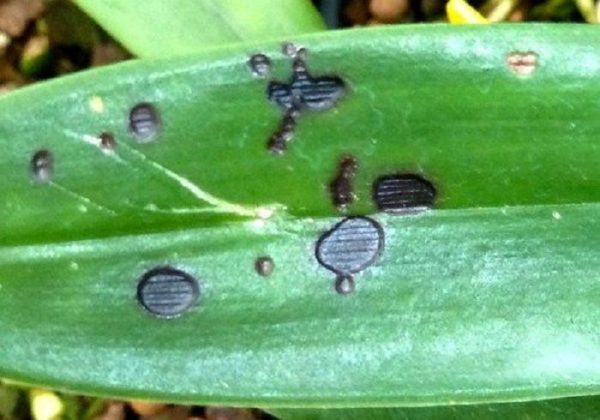 Stagnation of moisture on the leaves, high humidity helps to develop anthracnose. Dark brown round spots with clear borders appeared on the leaves. Damage increases over time. A pink or black coating appears.
Stagnation of moisture on the leaves, high humidity helps to develop anthracnose. Dark brown round spots with clear borders appeared on the leaves. Damage increases over time. A pink or black coating appears.
Humidity in the room must be reduced to 40-50%. Be sure to ventilate the room, to prevent water from entering the foliage. Sick leaves are removed, the sections of the sections are lubricated with ash or coal. Move the orchid to a dry place, regularly draining water from the pallet.In case of advanced case, chemical agents are used: Ridomil, Skor, Topsin-M, Mikosan.
Bacterial leaf spot
In hot weather, the likelihood of an infectious disease. It appears in the form of dark sunken spots with a yellow border. Bacteria penetrate through damage to the leaf plate. First, the ends of the leaves are damaged, then the entire leaf plate molds. You can bring bacteria with soil, water, pests.
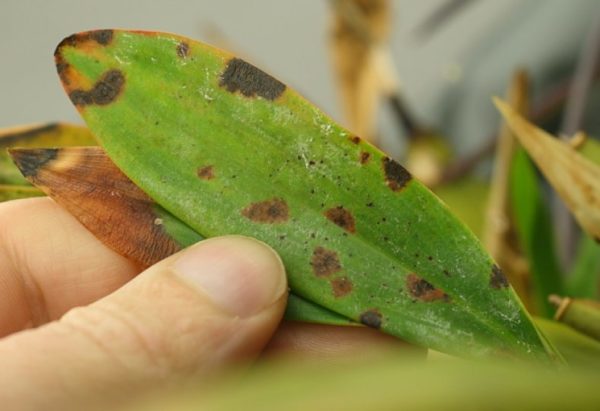 The spots are cut out, the cut is pollinated with coal, greased with brilliant green, iodine. Temporarily isolate the flower from neighboring plants. If after 7-10 days no dark spots appear, the orchid is returned to the place.
The spots are cut out, the cut is pollinated with coal, greased with brilliant green, iodine. Temporarily isolate the flower from neighboring plants. If after 7-10 days no dark spots appear, the orchid is returned to the place.
Powdery mildew on orchids treatment
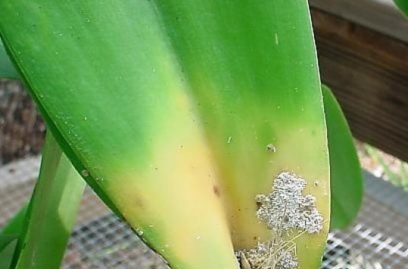 White dots form on the leaves. White mold on the orchid covers all parts of the plant, as if it were sprinkled with flour. White spots on orchid leaves appear at high temperatures with high humidity. Plants are steaming and rotting, mold appears in a pot with an orchid.
White dots form on the leaves. White mold on the orchid covers all parts of the plant, as if it were sprinkled with flour. White spots on orchid leaves appear at high temperatures with high humidity. Plants are steaming and rotting, mold appears in a pot with an orchid.
Prevention of powdery mildew is the spraying of a flower with Fitosporin. Treatment is carried out with the drug Scor. Spray the medicine into parts of the plant where there are white spots on orchids, except for flowers. Another way is to use colloidal sulfur, processing strictly according to the instructions.
Rust
For orchids, rust is a rare disease. It causes its fungus, which settles on weakened bushes. A rusty hue appears on the inside of the sheet.
The affected areas are cut out, the section is lubricated with an alcohol solution of 25%. Treat the infected beauty Mikasan, Ritomil, Skor. Tools are sprayed onto parts of the plant.
Sooty (black) mushrooms
Pests that settled on flowers (scale insects, aphids, mealybugs) do not give light access to the orchid. They clog the entire bottom of the sheet. The most dangerous worm, which feeds on plant juices, while secreting poison. Black dots appear on the sweet spots of the flower, when the leaf turns black, it falls off. The bush is weakening and dying. More often, infection occurs in the winter or with an excess of nitrogen.
0.3% baseazole or 0.2% benlat solution will help cure plants. The orchid is completely immersed in the mixture for several minutes. Between treatment, the interval is 15 days. For prevention, they use Neem tree oil, or they pour the soil with warm water at 50-55 degrees. Pests die at 40 degrees Celsius.
Fungal diseases of orchids and their treatment
Spores of fungi actively develop in a humid environment. High temperatures and moisture provoke fungi to multiply. White plaque on the roots and trunk, leaves darken, different spots appear on the orchid - these are signs of fungal infection.
Prevention measures and proper treatment help get rid of mold on orchids. The sooner a problem is discovered, the faster the plant will recover. Chemicals are sold in stores that help get rid of mold quickly. Treatment at home is carried out with the following drugs: Fundazole, Fitosporin, Bordeaux mixture, Quadris, Mikasan, Skor, Ritomil, Chistotsvet, Fozalon.
Rules for the treatment of fungal leaf disease:
- isolation of the diseased bush from other plants;
- removal of all infected parts;
- slice disinfection, treatment with coal, ash, alcohol, iodine, cinnamon, chlorhexidine;
- it is necessary to treat plants with fungicides;
- replacement of pot and substrate;
- instruments after processing are calcined over a fire, treated with alcohol.
In addition, it is necessary to reduce watering, ventilate the room, and prevent drafts. Watering only as the substrate dries at the beginning of the day.
Noncommunicable Orchid Diseases
Non-infectious injuries result from thermal exposure or sunburn. A plant can be affected by both the sun and cold air. Proper home care is needed.
Leaf warp
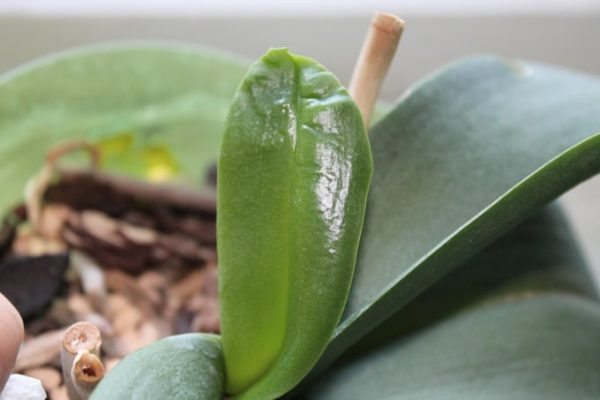 Fractures occur as a result of mechanical action.But there is another deformation of the sheet plate caused by a lack of moisture, or severe hypothermia. Some parts of the leaflet become irregular in shape and look crumpled. The cause may be overfeeding with nitrogen, breaks appear, cracks, color change.
Fractures occur as a result of mechanical action.But there is another deformation of the sheet plate caused by a lack of moisture, or severe hypothermia. Some parts of the leaflet become irregular in shape and look crumpled. The cause may be overfeeding with nitrogen, breaks appear, cracks, color change.
It is necessary to revise the temperature regime, increase watering, and abandon nitrogen fertilizers. They take the plant out of the pot, washed the roots, then transplanted the flower into another substrate.
Leaf burn
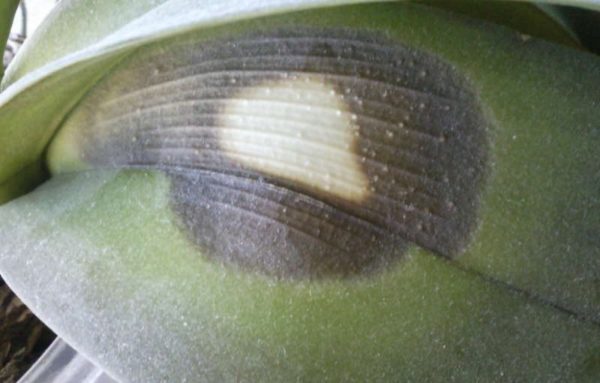 Burns are thermal and solar. Colorless lesions with a brown border appear in spring or summer with active sun. They provoke a burn of evaporation on the foliage in the form of drops of water. Thermal damage occurs from low-lying lamps during illumination. Dry streaks or spots appear on the foliage.
Burns are thermal and solar. Colorless lesions with a brown border appear in spring or summer with active sun. They provoke a burn of evaporation on the foliage in the form of drops of water. Thermal damage occurs from low-lying lamps during illumination. Dry streaks or spots appear on the foliage.
Photophilous species, starting in spring, need to be accustomed gradually to sunlight. A burn can also occur from batteries when sheets hang low over the radiator. A burn is a thermal effect and is not a disease. Damaged leaves are best removed. Install the flower in places with diffused lighting or obscure the window.
Frostbite
Frostbite occurs in late autumn or winter, when phalaenopsis standing by an open window, or in contact with a window pane. First, wrinkles appear on the leaves, tubercles, which turn into spots.
Damaged leaves are not restored, they are cut off. The bush is rearranged in a warm place without drafts. About 8-10 days leave the flower alone without watering and fertilizing. If the growth point is frostbite, then it is removed. Such an orchid reproduces only from a basal baby.
Tips and Prevention
After buying a new flower, you need to quarantine him. Place the orchid in a separate room. After stress, the bush will adapt for a month in a new place. Processing of rhizomes and leaves with tetracycline is allowed, although this does not always help.
Advice:
- It is better to spray plants 2 times a day without affecting the flowers. In the summer, water 1-2 times a week, in the winter 1-2 times a month. You can not water the flowers with cold water, the roots will rot, they heat the water to 35-40 degrees.
- To soften the water, dip a slice of peat in a bucket wrapped in gauze, a proportion of 10 g per 10 liters of liquid. The water used for irrigation is purified, it can be thawed or rain.
- Be sure to provide good drainage.
- Temperature differences should not exceed 4 degrees, the norm is 20-24 * C. Orchid fertilize 1-2 times a month.
- They use light containers for planting, make holes in the pots for ventilation, holes are needed on the walls and bottom of the pot.
- You can maintain humidity with the help of an aquarium; just place orchids next to it.
- For prevention, the orchid is sprayed once every 30 days with a solution of copper sulfate.
- Fertilizing plants with potassium will strengthen the plant's immunity.
- It is better to buy a ready-made mixture for orchids in the store, the substrate goes through all stages of processing.
- To combat moss or algae, the pot is wrapped in foil and a dark pot is placed.
To make the orchid blossom, the pot is sent to a dark place with a temperature of + 15 * C. They add phosphoric fertilizers and increase the humidity in the room. Then place the pot for 5-6 days, the plant in a dark corner. After 3 weeks, buds appear that will bloom for a long time.
An infected orchid should not be thrown away immediately until all treatment methods have been tried. Strengthening immunity is the main task in the fight against diseases. A healthy plant will resist many infections. If you purchased an orchid for the first time, then you should consult how to take care of it so that the young plant does not hurt and blooms for a long time.

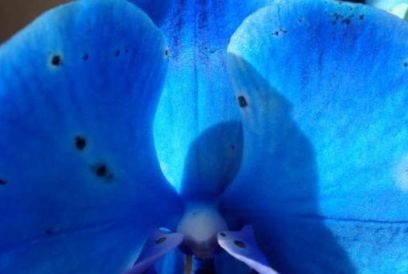
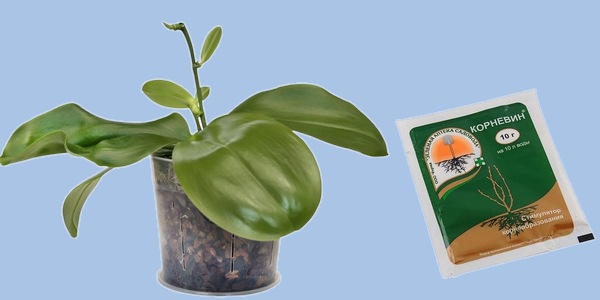
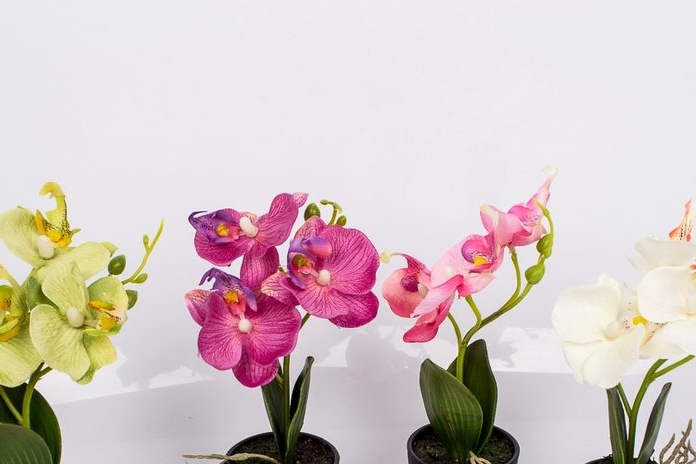
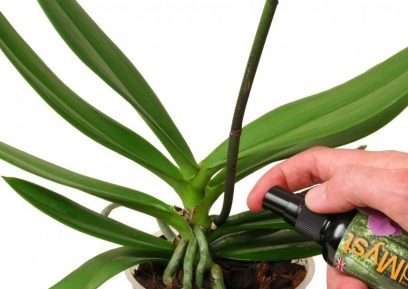
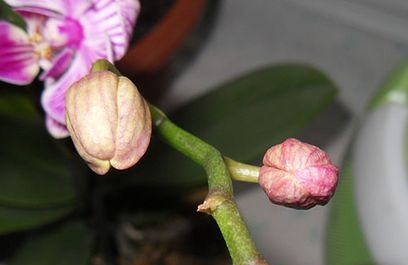 Reasons why orchids fall flowers and what to do
Reasons why orchids fall flowers and what to do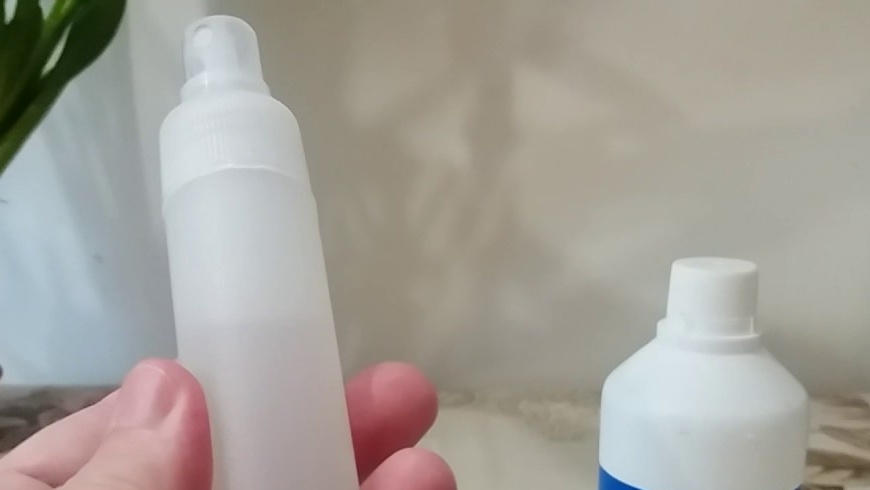 How to use hydrogen peroxide for orchids and why
How to use hydrogen peroxide for orchids and why Midges are wound up in the orchid: effective ways to get rid
Midges are wound up in the orchid: effective ways to get rid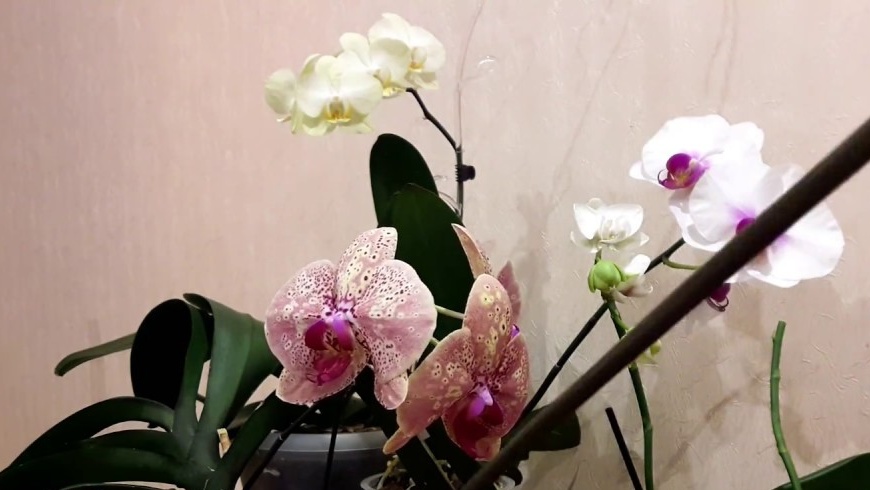 Is it possible to transplant an orchid during flowering
Is it possible to transplant an orchid during flowering